Tomorrow I will hop on a plane from Stockholm to Vienna. It will take 2 hours and 10 minutes to make the 1288km trip. Of course it takes a bit longer to drive it. About 2 days. I know as I drove down with my father before Christmas, and I brought the car back two weeks ago.
In the spirit of click bait articles all over the internet here is my 9 things I learned driving between Stockholm and Vienna.
 1 – You see weird things. On the final stretch into Stockholm I saw a car on fire by the side of the motorway. It barely rated a yawn after 40 hours of driving where I saw everything from roadside brothels (Czech), to huge free range chicken farms (Germany), to gigantic wind turbine blades being moved by road.
1 – You see weird things. On the final stretch into Stockholm I saw a car on fire by the side of the motorway. It barely rated a yawn after 40 hours of driving where I saw everything from roadside brothels (Czech), to huge free range chicken farms (Germany), to gigantic wind turbine blades being moved by road.
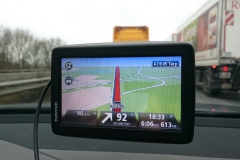 2 – You can tell what country you are in by their drivers. Czech drivers were the worst – aggressive, erratic and impatient. Germans were the fastest, but then much of the time there were no speed limits. And Swedes are by far the politest, most laid back drivers there are. I doubt the horn is even connected in their Volvos.
2 – You can tell what country you are in by their drivers. Czech drivers were the worst – aggressive, erratic and impatient. Germans were the fastest, but then much of the time there were no speed limits. And Swedes are by far the politest, most laid back drivers there are. I doubt the horn is even connected in their Volvos.
3 – Sweden is EXTREMELY boring to drive in. Malmo to Stockholm is about 6 and a half hours of trees. Swedes have so much space they don’t need to put motorways near built up areas. So other than 15 minutes looking at the lake near Jonkoping, and the sights near the Saab aircraft factory outside Linkoping, it’s nothing but trees, for hour after hour. I told the north of the country is even more boring. Somehow.
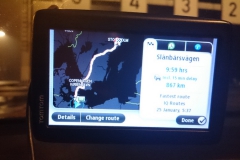 4 – GPS is wonderful, but.. Our children will not know the family rows our parents had driving on the continent with paper maps and trying to find the bloody Formula 1 hotel which you can see but can’t figure out how to get to. However it is not infallible. This I discovered when I found myself routed down a tiny Czech back road. I wasn’t the first to find themself there, as I was saved by a handwritten “Dresden” stuck on a stop sign which put me back on the right road.
4 – GPS is wonderful, but.. Our children will not know the family rows our parents had driving on the continent with paper maps and trying to find the bloody Formula 1 hotel which you can see but can’t figure out how to get to. However it is not infallible. This I discovered when I found myself routed down a tiny Czech back road. I wasn’t the first to find themself there, as I was saved by a handwritten “Dresden” stuck on a stop sign which put me back on the right road.
5 – The whole journey is much easier if you sleep. Be sure to do the sleeping before you get in the car though. My biggest worry (other than snow) was getting tired and dozing off. I banked sleep for a few days beforehand and paced myself. Mostly it was 2 hour stretches then stop for coffee or food, and a driver swap if available. Only once on the trip did I feel tired, and then it was just for a few minutes. Boredom turned out to be the real challenge. But there is a solution to that.
6 – Music Music Music. When you are on your own it can be boring (see above about Sweden and trees). I found music made a big difference. I played my music collection off my phone, and was happily able to tunelessly scream out whatever I wanted. It did teach me I need to freshen up my music collection though.
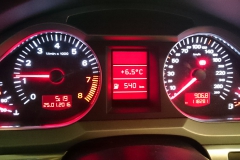 7 – The drive is easier when you have the road to yourself. So start as early as possible each day. I left Vienna at around 0600 on a Sunday so I didn’t see any real traffic until about about lunch time. By that stage I was across Austria, Czech, and all the way into Germany. The following day I had a 0600 ferry to Denmark, and was driving there at 0800. It was much easier as well to deal with driving in the dark when it is early in the day and you are fresh. Better that than after you have been going for 12 hours. The early starts meant some light early morning fog was the only problem. Which brings me to the weather…
7 – The drive is easier when you have the road to yourself. So start as early as possible each day. I left Vienna at around 0600 on a Sunday so I didn’t see any real traffic until about about lunch time. By that stage I was across Austria, Czech, and all the way into Germany. The following day I had a 0600 ferry to Denmark, and was driving there at 0800. It was much easier as well to deal with driving in the dark when it is early in the day and you are fresh. Better that than after you have been going for 12 hours. The early starts meant some light early morning fog was the only problem. Which brings me to the weather…
8 – Between bad drivers and bad weather, I’d prefer to deal with the former. The weather was the one concern I had planning the trip. I was most worried about running into snow on the way which would totally kill my schedule. It turned out the greatest difficulties were heavy rain heading out of Stockholm on the first leg. It made for tiring driving and I was glad I could swap regularly with my father. On the return, snow and cold caused some problems. It had snowed across most of Europe the day before I left Vienna, but the next two days were when all that snow melted. Which meant slush, wet roads, and all sorts of muck thrown up on the windscreen. I had to refill the screen wash three times in 2 days to cope!
9 – It is good to be an Engineer – Being an Engineer I had a good car (Audi A6 with a petrol engine), which was well maintained, and equipped (winter tyres) so it was comfortable, reliable, and built for this type of driving. It also meant I knew what to do when I had my scariest incident on the road in the Czech republic.
At one point the road uses a causeway to cross a lake. The temperature went from +4C on the land to -4C over the lake in the space of about a kilometre. As the windscreen dropped in temperature it was suddenly coated on the inside by condensation. It happened so fast, and was so opaque I had to pull over. The car heater couldn’t clear it, even on full heat and blow. Being a good Engineer I figured the internal humidity was a part of the problem. Once I brought in fresh dry air from outside the window cleared in about minute.
If there was a 10th thing, it is that this would have been a totally different proposition if I had the family with me. Synchronising everyone’s bladders, roadside dining timings and preferences, and getting them to tolerate my singing would have been far more challenging than the drive 🙂





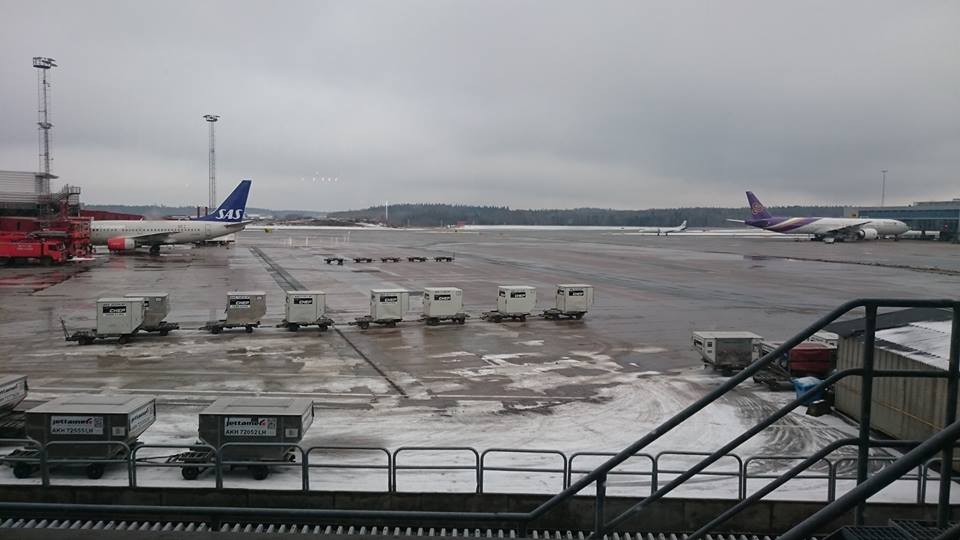


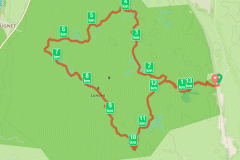


Recent Comments